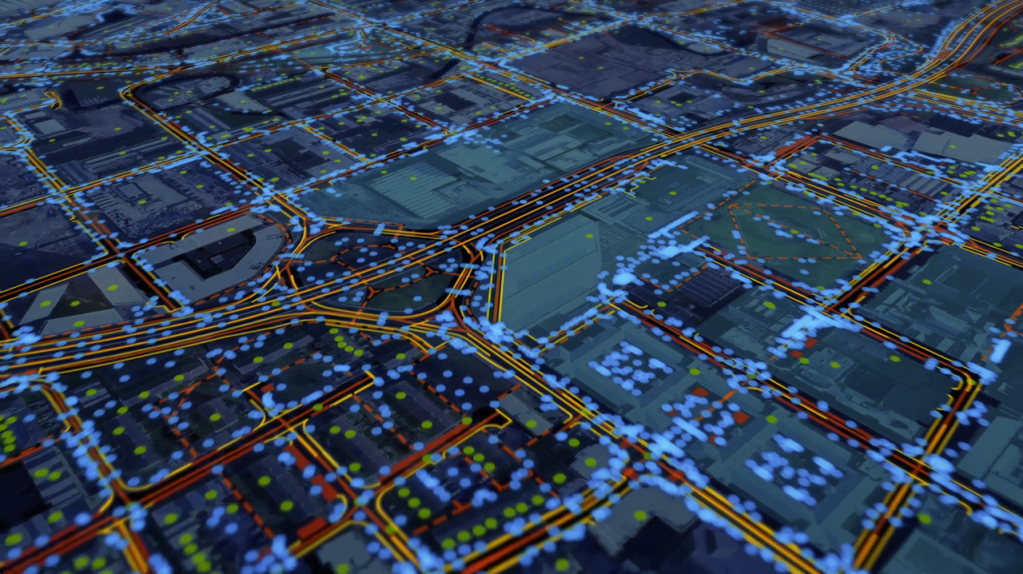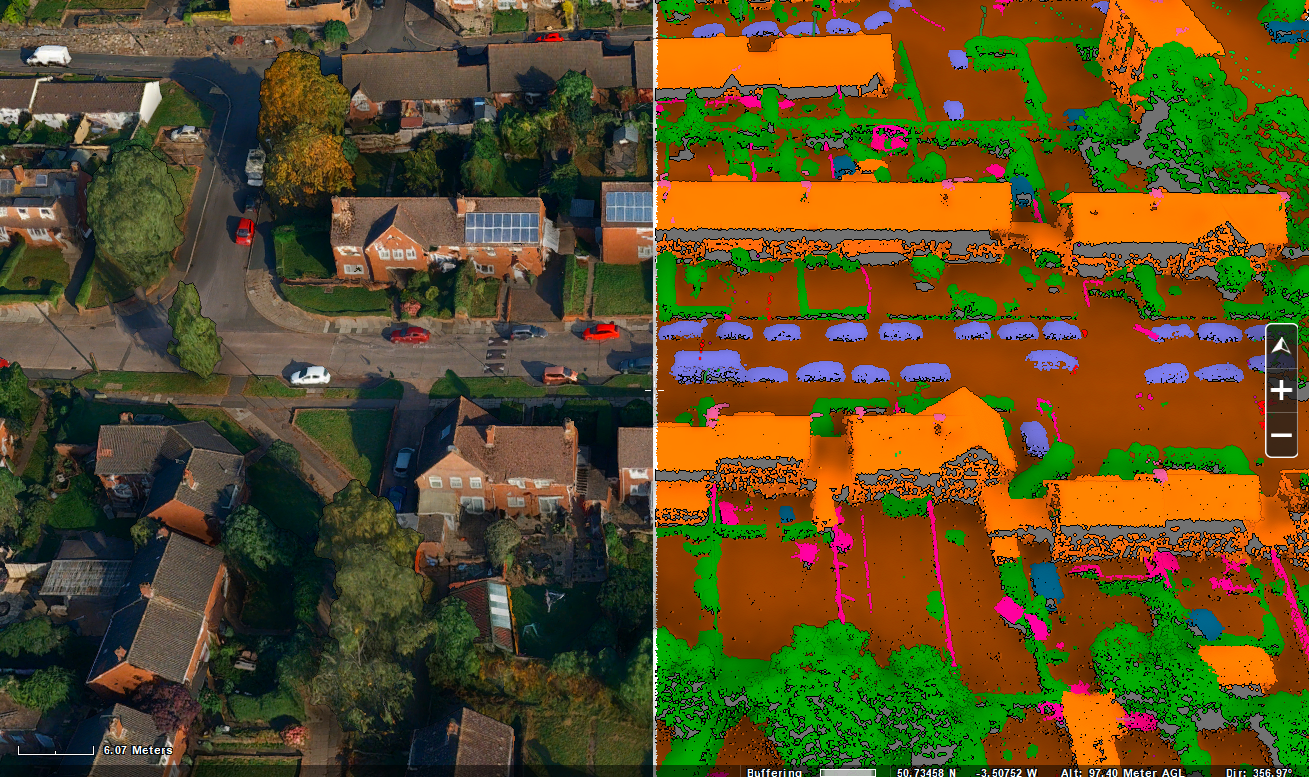Post by Christopher, Ordnance Survey consultant working in the Welsh Government
Darllenwch y dudalen hon yn Gymraeg
Digital twins could deliver £7bn in benefits to the UK economy by 2050, according to a recent Centre for Digital Built Britain (CDBB) report. The report also found that digital twins could reduce costs by up to 25%, improve productivity by up to 15%, and reduce emissions by up to 20%.
With this in mind, the Ordnance Survey is working with the Welsh Government over the next few months to explore if and how digital twins could support the Digital Strategy for Wales in underpinning policy areas and identify where they could add the most value.

What are digital twins?
Digital twins are virtual replicas of physical objects, systems, or processes. Digital twins mirror those real-world entities, capturing their behaviour, interactions, and performance. They thrive on data and constantly update to reflect changes in their physical counterparts.
Digital Twins can come in varying levels of complexity. They can range from a simple digital map to a highly intricate system that utilises artificial intelligence and machine learning and incorporates feedback loops.
The first level is the digital model, a simple digital representation of the physical object or system.
The second level is the digital shadow, a more advanced representation that includes data from sensors and other sources to provide a more accurate and detailed reflection of the physical object or system.
The highest level of is the digital twin, which is the most advanced and comprehensive representation of the physical object or system. Digital twins incorporate data from various sources, including the Internet of Things (IoT) devices, machine learning algorithms, and artificial intelligence, to provide a highly accurate, real-time reflection of the physical object or system. This allows for better monitoring, analysis, and optimisation of the physical object or system, improving performance, efficiency, and reliability.
How can they be used?
Over the last few decades, digital twins have been used across the private sector, for example, in the automotive and aviation sectors. They have been used to improve product design, reduce prototyping costs, and accelerate production timescales. Companies can monitor machinery and infrastructure using digital twins which helps to predict maintenance needs and prevent costly breakdowns.
Recently, digital twins have incorporated a geospatial aspect, for example, demonstrating where things are. The digital twin of a major road network can reflect traffic flow, road conditions and maintenance needs. This helps decision-makers to manage traffic and keep it flowing, plan repairs and enhance safety.

Digital twins can also model entire cities – simulating population growth, energy consumption and environmental impact. They can even simulate the effects of policy changes on healthcare outcomes.
The potential for use of digital twins is endless. Imagine the possibilities!
We are excited to find out how digital twins could help the Welsh Government explore opportunities to improve policy, services and outcomes for people in Wales.
The next four months – and beyond
Stay tuned and we will be posting a link shortly with more information on digital twins.
